Themed collection Advanced Functional Nanomaterials for Biomedical Applications

Introduction to advanced functional nanomaterials for biomedical applications
Chenjie Xu, Yu Shrike Zhang, Sylvie Begin and Nguyễn Thị Kim Thanh introduce the Nanoscale and Nanoscale Advances themed collection on advanced functional nanomaterials for biomedical applications.

Nanoscale, 2022,14, 7441-7443
https://doi.org/10.1039/D2NR90077G
Prospects and applications of synergistic noble metal nanoparticle-bacterial hybrid systems
The synergistic combination of noble metal nanoparticles and bacterial cells results in hybrid systems that offer new useful properties for the development of future applications and tools.
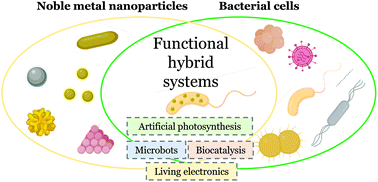
Nanoscale, 2021,13, 18054-18069
https://doi.org/10.1039/D1NR04961E
Ferrofluids and bio-ferrofluids: looking back and stepping forward
Ferrofluids investigated along for about five decades are ultrastable colloidal suspensions of magnetic nanoparticles, which manifest simultaneously fluid and magnetic properties.
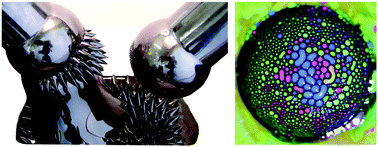
Nanoscale, 2022,14, 4786-4886
https://doi.org/10.1039/D1NR05841J
Advanced metal and carbon nanostructures for medical, drug delivery and bio-imaging applications
This article overviews the recent trends of various types of metallic, noble, magnetic and carbon nanomaterials (carbon nanotubes, graphene, nanodiamonds, fullerene and their derivatives) specific to the drug delivery and bio-imaging fields.
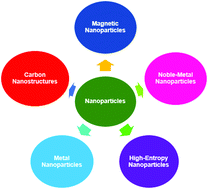
Nanoscale, 2022,14, 3987-4017
https://doi.org/10.1039/D1NR07643D
Magnetic particle imaging: tracer development and the biomedical applications of a radiation-free, sensitive, and quantitative imaging modality
This review focusses on magnetic particle imaging (MPI), considering progress made in the many biomedical applications, and the design of nanoparticle tracers tailored towards optimal performance.
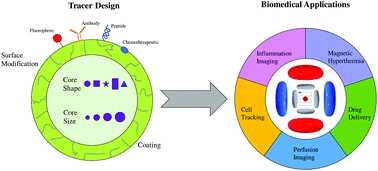
Nanoscale, 2022,14, 3658-3697
https://doi.org/10.1039/D1NR05670K
Manganese-based advanced nanoparticles for biomedical applications: future opportunity and challenges
The present review article provides the insight of an overall survey on the recent advancements of manganese nanomaterials for biomedical nanotechnology and other fields.
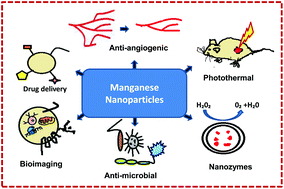
Nanoscale, 2021,13, 16405-16426
https://doi.org/10.1039/D1NR04964J
Self-assembly of peptide nanofibers for imaging applications
Self-assembly of peptide nanofibers shows significance in tumor/disease imaging applications.

Nanoscale, 2021,13, 15142-15150
https://doi.org/10.1039/D1NR04992E
Exosome-mediated delivery of gene vectors for gene therapy
Exosome encapsulation protects and delivers AAV vectors for gene therapy.
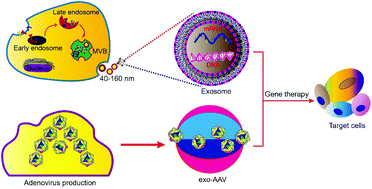
Nanoscale, 2021,13, 1387-1397
https://doi.org/10.1039/D0NR07622H
Magnetite-binding proteins from the magnetotactic bacterium Desulfamplus magnetovallimortis BW-1
Recently discovered proteins from magnetotactic Deltaproteobacteria were tested for their ability to bind to magnetite surfaces. Two new proteins (Mad10, Mad11) were identified that display fast and nearly irreversible magnetite binding.
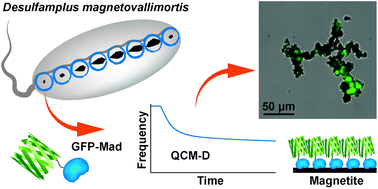
Nanoscale, 2021,13, 20396-20400
https://doi.org/10.1039/D1NR04870H
Multifunctional carbon dots with near-infrared absorption and emission for targeted delivery of anticancer drugs, tumor tissue imaging and chemo/photothermal synergistic therapy
A multifunctional nanoprobe for tumor microenvironment- induced cancer imaging and chemo/PTT synergistic targeted therapy was constructed. Tumor microenvironment-specific stimuli responses enable targeted drug accumulation and cancer imaging.
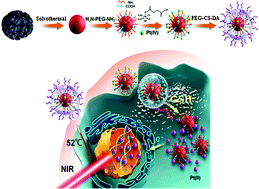
Nanoscale Adv., 2021,3, 6869-6875
https://doi.org/10.1039/D1NA00595B
Mitochondria targeted composite enzyme nanogels for synergistic starvation and photodynamic therapy
A dual-enzyme nanogel system is successfully fabricated for synergistic starvation and photodynamic therapy.
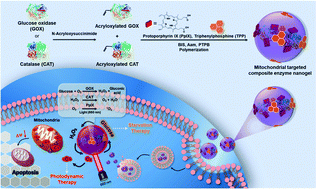
Nanoscale, 2021,13, 17737-17745
https://doi.org/10.1039/D1NR06214J
Highly efficient photothermal nanoparticles for the rapid eradication of bacterial biofilms
An effective photothermy generation aggregate system for bacterial biofilm elimination was designed and investigated. Results indicated that the biofilm matrix was destroyed by the nano-system in addition to the killing of the embedded bacteria.
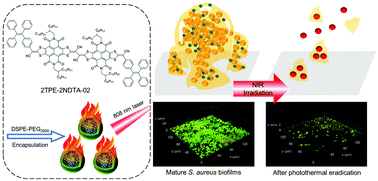
Nanoscale, 2021,13, 13610-13616
https://doi.org/10.1039/D1NR03471E
Tunable gold nanorod/NAO conjugates for selective drug delivery in mitochondria-targeted cancer therapy
Nano-conjugates composed of gold nanorods and nonyl acridine orange (NAO) derivatives were built as a novel approach for mitochondria targeted-cancer therapy.
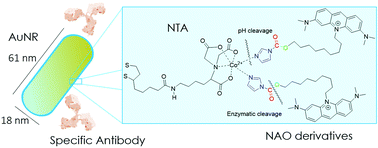
Nanoscale, 2022,14, 8028-8040
https://doi.org/10.1039/D2NR02353A
Improved nanoformulation and bio-functionalization of linear-dendritic block copolymers with biocompatible ionic liquids
Ionic liquid-functionalized linear-dendritic block copolymer nanoparticles show facile assemblies and red blood cell hitchhiking in whole blood.

Nanoscale, 2022,14, 6021-6036
https://doi.org/10.1039/D2NR00538G
Riboflavin–citrate conjugate multicore SPIONs with enhanced magnetic responses and cellular uptake in breast cancer cells
Riboflavin-coated multicore SPIONs show specific binding with RCP, enhanced uptake in breast cancer cells and excellent MRI response.

Nanoscale Adv., 2022,4, 1988-1998
https://doi.org/10.1039/D2NA00015F
Revealing the heterogeneity in neuroblastoma cells via nanopillar-guided subnuclear deformation
Quantitative characterization of heterogeneity in neuroblastoma cells is achieved using nanopillar-guided subnuclear irregularities.
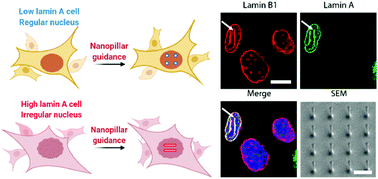
Nanoscale, 2022,14, 2617-2627
https://doi.org/10.1039/D1NR04996H
SERS tags derived from silver nanoparticles and aryl diazonium salts for cell Raman imaging
Surface functionalization of silver nanoparticles by Raman reporters derived from aryl diazonium salts offers new opportunities for the design of Surface-Enhanced Raman Spectroscopy (SERS) labels for Cell Raman Imaging
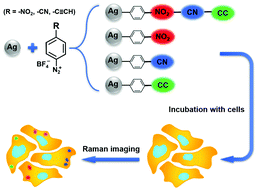
Nanoscale, 2022,14, 1452-1458
https://doi.org/10.1039/D1NR03148A
Persistent luminescence nanoparticles functionalized by polymers bearing phosphonic acid anchors: synthesis, characterization, and in vivo behaviour
Optical in vivo imaging has become a widely used technique and is still under development for clinical diagnostics and treatment applications.

Nanoscale, 2022,14, 1386-1394
https://doi.org/10.1039/D1NR07114A
Nanoengineered myogenic scaffolds for skeletal muscle tissue engineering
Here, we developed a nano-engineered biomaterial optimized for skeletal muscle proliferation and differentiation. Nanoclay disks were used to control the release of insulin-like growth factor (IGF-1), a key myogenic and immunogenic regulator.
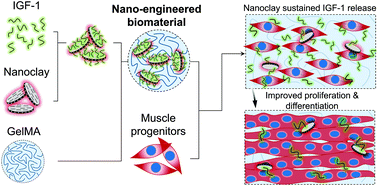
Nanoscale, 2022,14, 797-814
https://doi.org/10.1039/D1NR06143G
Tailoring defects and nanocrystal transformation for optimal heating power in bimagnetic CoyFe1−yO@CoxFe3−xO4 particles
Synchrotron X-ray scattering reveals that atomic-scale defect control manipulated by chemical substitution optimizes nanomagnetism and enables hyperthermia heating in core-shell iron-oxide nanocrystals.
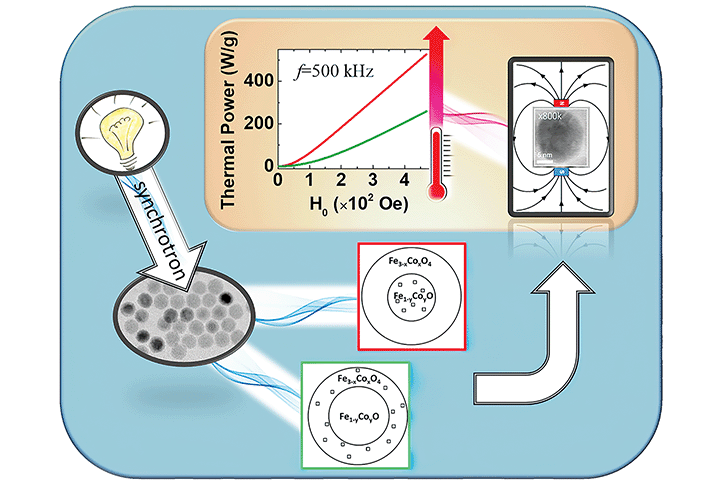
Nanoscale, 2022,14, 382-401
https://doi.org/10.1039/D1NR05172E
pH-Responsive doxorubicin delivery using shear-thinning biomaterials for localized melanoma treatment
Injectable shear-thinning biomaterials (STBs) have attracted significant attention because of their efficient and localized delivery of cells as well as various molecules ranging from growth factors to drugs.

Nanoscale, 2022,14, 350-360
https://doi.org/10.1039/D1NR05738C
Counterion-insulated near-infrared dyes in biodegradable polymer nanoparticles for in vivo imaging
Bulky hydrophobic counterions were applied for encapsulation of near-infrared cyanine dyes into biodegradable polymer matrix with minimized self-quenching, yielding fluorescent nanoparticles with stealth PEG shell for in vivo imaging.
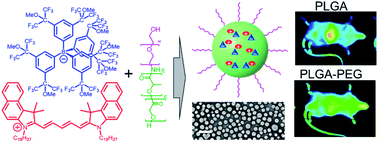
Nanoscale Adv., 2022,4, 39-48
https://doi.org/10.1039/D1NA00649E
Controlled delivery of gold nanoparticle-coupled miRNA therapeutics via an injectable self-healing hydrogel
A novel injectable hydrogel drug delivery platform introduces miRNA therapeutics coupled to gold nanoparticles to cells in a 3D bioprinted heart valve disease model.
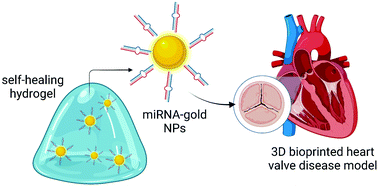
Nanoscale, 2021,13, 20451-20461
https://doi.org/10.1039/D1NR04973A
Heterogeneous multi-compartmental DNA hydrogel particles prepared via microfluidic assembly for lymphocyte-inspired precision medicine
Heterogeneous multi-compartmental DNA hydrogel particles fabricated via microfluidic assembly were incorporated with a tandem DNA sequence logical circuit for precision medicine against cancers.

Nanoscale, 2021,13, 20531-20540
https://doi.org/10.1039/D1NR06594G
Multimodal fluorescently labeled polymer-coated GdF3 nanoparticles inhibit degranulation in mast cells
Multimodal gadolinium fluoride nanoparticles belong to potential contrast agents useful for bimodal optical fluorescence and magnetic resonance imaging.

Nanoscale, 2021,13, 19023-19037
https://doi.org/10.1039/D1NR06127E
A phase-transfer catalyst-based nanoreactor for accelerated hydrogen sulfide bio-imaging
Phase-transfer catalyst (PTC)-based nanoprobes were designed to accelerate the probe–analyte reaction in aqueous solutions for the real-time imaging of H2S under biological conditions.
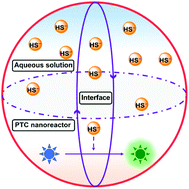
Nanoscale, 2021,13, 19049-19055
https://doi.org/10.1039/D1NR04931C
Co-doping optimized hydrogel-elastomer micro-actuators for versatile biomimetic motions
We introduce a co-doping-based fabrication of stimuli-responsive hydrogel-elastomer actuators. Based on this actuator, a series of bio-inspired soft micro-robots are developed, demonstrating biomimetic motions, such as grabbing, crawling and jumping.
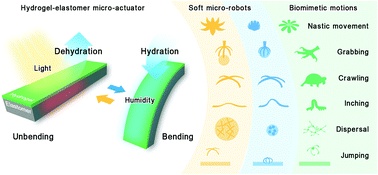
Nanoscale, 2021,13, 18967-18976
https://doi.org/10.1039/D1NR05757J
Metal–organic framework combined with CaO2 nanoparticles for enhanced and targeted photodynamic therapy
A self-supplying O2 nanosystem based on MOF combined with hyaluronate-modified CaO2 (PCN-224-CaO2-HA) was constructed. This nanosystem can be used for targeted and enhanced photodynamic therapy in vitro and in vivo.
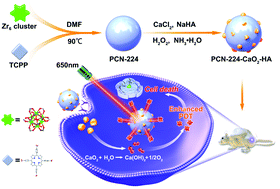
Nanoscale Adv., 2021,3, 6669-6677
https://doi.org/10.1039/D1NA00610J
Two step promotion of a hot tumor immune environment by gold decorated iron oxide nanoflowers and light-triggered mild hyperthermia
Photoactivated Gold decorated iron oxide nanoflowers induce a hot tumor immune microenvironnment in triple negative breast cancer model.
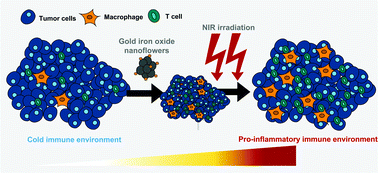
Nanoscale, 2021,13, 18483-18497
https://doi.org/10.1039/D1NR03201A
Dopamine based adhesive nano-coatings on extracellular matrix (ECM) based grafts for enhanced host–graft interfacing affinity
An adhesive nano-coating on extracellular matrix (ECM) based grafts, which could crosslink in situ with ferric ions for fixation with surrounding tissues after implantation without affecting the porous structures of the grafts, was developed.
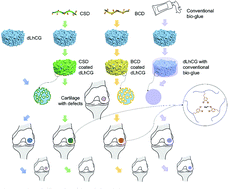
Nanoscale, 2021,13, 18148-18159
https://doi.org/10.1039/D1NR06284K
A multifunctional electronic suture for continuous strain monitoring and on-demand drug release
A schematic of the drug release electronic suture system (DRESS) with a conductive fiber strain sensor core and a thermoresponsive polymer shell containing drugs.
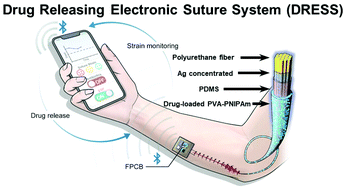
Nanoscale, 2021,13, 18112-18124
https://doi.org/10.1039/D1NR04508C
An amino acid-based supramolecular nanozyme by coordination self-assembly for cascade catalysis and enhanced chemodynamic therapy towards biomedical applications
We developed a supramolecular nanozyme through the strategy of multicomponent coordination self-assembly using a bio-derived amino acid, glucose oxidase and Fe2+ as building blocks, which exhibited great potential towards biomedical applications.

Nanoscale Adv., 2021,3, 6482-6489
https://doi.org/10.1039/D1NA00619C
Photoenhanced cytosolic protein delivery based on a photocleavable group-modified dendrimer
An efficient photoresponsive protein delivery system was developed by exploiting the protein-binding function of a photocleavable group, DEACM.
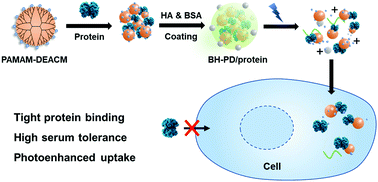
Nanoscale, 2021,13, 17784-17792
https://doi.org/10.1039/D1NR04430C
Functionalized silica nanoplatform as a bimodal contrast agent for MRI and optical imaging
The preparation of an efficient bimodal single probe for magnetic resonance (MRI) and optical imaging (OI) is reported.
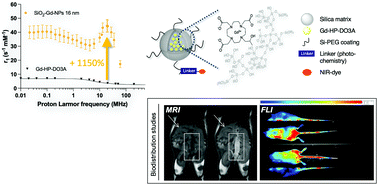
Nanoscale, 2021,13, 16509-16524
https://doi.org/10.1039/D1NR04972K
Improving the knock-in efficiency of the MOF-encapsulated CRISPR/Cas9 system through controllable embedding structures
A rapid and convenient method was developed to load gene molecules into nanostructures, exploring structure–function relationship for efficient intracellular delivery and gene editing, opening up new avenues for the MOF-based non-viral vectors.
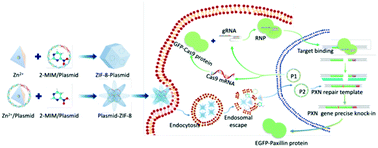
Nanoscale, 2021,13, 16525-16532
https://doi.org/10.1039/D1NR02872C
Enhanced penetrative siRNA delivery by a nanodiamond drug delivery platform against hepatocellular carcinoma 3D models
Comprehensive analysis of hepatocellular carcinoma 3D models revealed enhanced penetrative siRNA delivery by a nanodiamonds compared to liposomes. Nanodiamonds were able to improve siRNA's gene knockdown and anti-cancer effects in 3D tumor models.
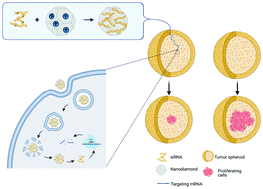
Nanoscale, 2021,13, 16131-16145
https://doi.org/10.1039/D1NR03502A
Rapid bacterial elimination achieved by sonodynamic Au@Cu2O hybrid nanocubes
With the boosted sonocatalytic activity established by the interfacial Schottky junction, the Au@Cu2O hybrid nanocubes can substantially produce reactive oxygen species under ultrasound stimulation so as to eliminate incoming bacteria rapidly.
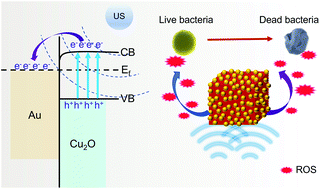
Nanoscale, 2021,13, 15699-15710
https://doi.org/10.1039/D1NR04512A
Sprayed copper peroxide nanodots for accelerating wound healing in a multidrug-resistant bacteria infected diabetic ulcer
Attributed to the dual function of antimicrobial and angiogenesis, sprayed CuO2 nanodots accelerate wound healing in diabetic ulcers with an acidic environment.

Nanoscale, 2021,13, 15937-15951
https://doi.org/10.1039/D1NR04687J
How size, shape and assembly of magnetic nanoparticles give rise to different hyperthermia scenarios
We demonstrate that some assemblies of anisometric nanoparticles could be the ideal agents to optimize the response to external AC fields for magnetic fluid hyperthermia in viscous environments.
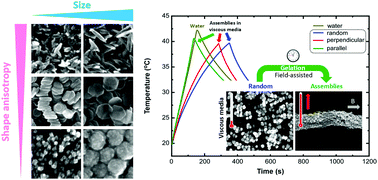
Nanoscale, 2021,13, 15631-15646
https://doi.org/10.1039/D1NR03484G
Extracellular vesicles from adipose stromal cells combined with a thermoresponsive hydrogel prevent esophageal stricture after extensive endoscopic submucosal dissection in a porcine model
We show herein that a combination of a biomaterial and extracellular vesicles (produced at a high yield by a turbulence stimulation from stromal cells) was effective in the prevention of esophageal stricture in a clinically relevant porcine model.
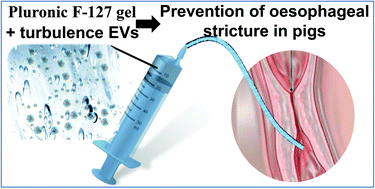
Nanoscale, 2021,13, 14866-14878
https://doi.org/10.1039/D1NR01240A
Individual particle heating of interacting magnetic nanoparticles at nonzero temperature
We show how tumour heating in magnetic hyperthermia can become more homogeneous through exploitation of magnetisation dynamics of interacting particles.
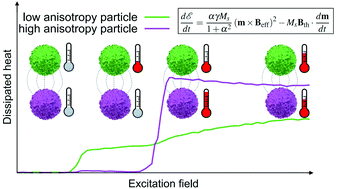
Nanoscale, 2021,13, 14734-14744
https://doi.org/10.1039/D1NR05311F
Enhanced drug retention by anthracene crosslinked nanocomposites for bimodal imaging-guided phototherapy
Core–shell structures of anthracene crosslinked nanocomposites containing upconverting nanoparticles and IR780 are manufactured to achieve better phototherapeutic tumor treatment with MRI/PA bimodal imaging guidance.
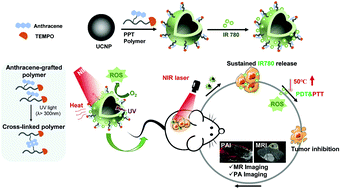
Nanoscale, 2021,13, 14713-14722
https://doi.org/10.1039/D1NR04171A
Cetuximab-Ag2S quantum dots for fluorescence imaging and highly effective combination of ALA-based photodynamic/chemo-therapy of colorectal cancer cells
Highly effective and selective killing of EGFR(+)-colorectal cancer cell lines was achieved with targeted PDT and PDT/chemotherapy combination using theranostic nanoparticles.
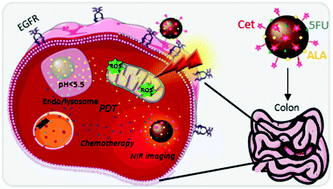
Nanoscale, 2021,13, 14879-14899
https://doi.org/10.1039/D1NR03507J
A nanoparticle-containing polycaprolactone implant for combating post-resection breast cancer recurrence
A local delivery strategy provides an alternative adjuvant chemotherapy for post-surgical breast cancer, not only preventing the local recurrence but also offering necessary mechanical support for breast tissue reconstruction.
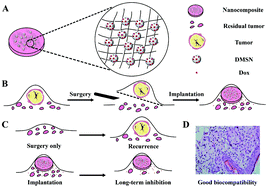
Nanoscale, 2021,13, 14417-14425
https://doi.org/10.1039/D1NR04125H
Unveiling the role of surface, size, shape and defects of iron oxide nanoparticles for theranostic applications
Theranosticity of nanoparticles provided by their shape, size, defects and dendron coating.

Nanoscale, 2021,13, 14552-14571
https://doi.org/10.1039/D1NR03335B
Di- and tri-component spinel ferrite nanocubes: synthesis and their comparative characterization for theranostic applications
Mixed transition metals ferrites nanocubes are here prepared. Their magnetic properties are evaluated to assess their applicability as theranostic tools for magnetic hyperthermia treatment, magnetic resonance imaging and magnetic particles imaging.

Nanoscale, 2021,13, 13665-13680
https://doi.org/10.1039/D1NR01044A
A co-delivery nanoplatform for a lignan-derived compound and perfluorocarbon tuning IL-25 secretion and the oxygen level in tumor microenvironments for meliorative tumor radiotherapy
A co-delivery nanoplatform for a lignan-derived compound and perfluorocarbon was reported to increase the oxygen level and IL-25 secretion, providing a new strategy of manipulating the tumor microenvironment to improve the radiotherapeutics.
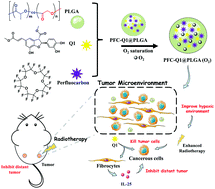
Nanoscale, 2021,13, 13681-13692
https://doi.org/10.1039/D1NR03738B
Hyperspectral-enhanced dark field analysis of individual and collective photo-responsive gold–copper sulfide nanoparticles
Hyperspectral-enhanced dark field microscopy to correlate Au/CuS NPs’ changes in their physicochemical properties induced by cellular environments with their functionality as photothermal probes by tracking their scattering profile evolution in real time.

Nanoscale, 2021,13, 13256-13272
https://doi.org/10.1039/D0NR08256B
Hemin-lipid assembly as an artemisinin oral delivery system for enhanced cancer chemotherapy and immunotherapy
A liposomal nanostructure self-assembled from hemin-lipid has been designed to co-deliver artemisinin, an antimalarial drug, with hemin to mimic plasmodium falciparum microenvironment, and to take advantage of ART as an oral anticancer drug.

Nanoscale, 2021,13, 13231-13240
https://doi.org/10.1039/D1NR01302E
Employing defined bioconjugates to generate chemically functionalised gold nanoparticles for in vitro diagnostic applications
Herein we report a versatile method for introducing functionality to gold nanoparticles by exploiting the strong interaction between chemically functionalised bovine serum albumin (f-BSA) and citrate-capped gold nanoparticles (AuNPs).
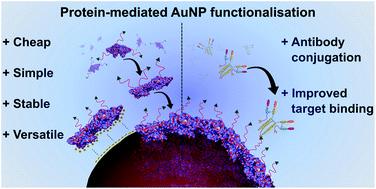
Nanoscale, 2021,13, 11921-11931
https://doi.org/10.1039/D1NR02584H
Tandem molecular self-assembly for selective lung cancer therapy with an increase in efficiency by two orders of magnitude
By using elevated level of phosphatase and reductase in lung cancer cells, we designed a tandem molecular self-assembling prodrug that could selectively improve the therapeutic efficacy of HCPT against lung cancer by two orders of magnitude.
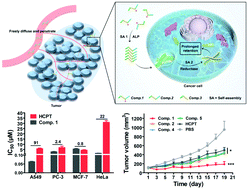
Nanoscale, 2021,13, 10891-10897
https://doi.org/10.1039/D1NR01174J
Room temperature synthesized solid solution AuFe nanoparticles and their transformation into Au/Fe Janus nanocrystals
Solid solution AuFe nanoparticles with paramagnetic Fe atoms in the Au matrix synthesized at 25 °C transform into Janus particles upon annealing at 700 °C with the ferromagnetic bcc Fe phase epitaxially grown on fcc Au.

Nanoscale, 2021,13, 10402-10413
https://doi.org/10.1039/D1NR00383F
Small iron oxide nanoparticles as MRI T1 contrast agent: scalable inexpensive water-based synthesis using a flow reactor
Small iron oxide nanoparticles (IONPs) were synthesised in water via co-precipitation by quenching particle growth after the magnetic iron oxide phase formed.
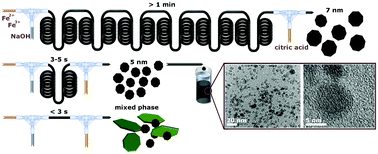
Nanoscale, 2021,13, 8795-8805
https://doi.org/10.1039/D1NR00877C
Magneto-fluorescent nanocomposites: experimental and theoretical linkage for the optimization of magnetic hyperthermia
Magneto-fluorescent nanocomposites of Zn doped ferrites nanoparticles with Pt complexes for magnetic hyperthermia and fluorescent imaging.
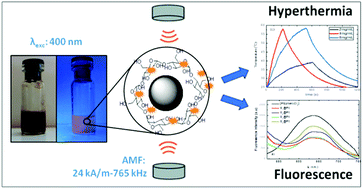
Nanoscale, 2021,13, 6426-6438
https://doi.org/10.1039/D1NR00121C
Biomimetic cytomembrane nanovaccines prevent breast cancer development in the long term
Biomimetic cytomembrane nanovaccines were fabricated to enhance immunity and induce the generation of immune response to fight against breast cancer challenge.
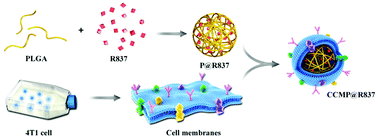
Nanoscale, 2021,13, 3594-3601
https://doi.org/10.1039/D0NR08978H
Local administration of stem cell-derived extracellular vesicles in a thermoresponsive hydrogel promotes a pro-healing effect in a rat model of colo-cutaneous post-surgical fistula
Local minimally-invasive EV delivery on a thermo-actuated PF-127 gel enhanced EV residence time in colo-cutaneous fistulas promoting a therapeutic effect.
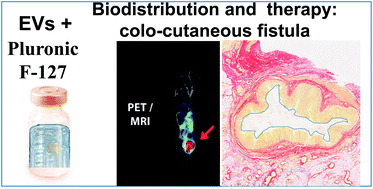
Nanoscale, 2021,13, 218-232
https://doi.org/10.1039/D0NR07349K
About this collection
Guest Edited by Professor Nguyễn T. K. Thanh (University College London, UK), Professor Chenjie Xu (City University of Hong Kong, Hong Kong), Professor Yu Shrike Zhang (Harvard Medical School, USA) and Professor Sylvie Begin (University of Strasbourg, France).
Biomedical nanotechnology has witnessed significant progress within the last few decades. Materials at the nanoscale present unique and widely tuneable physicochemical properties that allow numerous unconventional applications to be achieved, which are otherwise not quite possible at larger length scales. More recently, they have found additional usage when combined with other materials at different scales enabling multiscale behaviours that are instrumental for applications that require multiplexed functionalities. This collection focuses on the optical, electrical and magnetic properties of nanomaterials for biomedical applications, the rational design and synthesis of nanomaterials for transdermal drug delivery, biosensing and regenerative medicine, and the use of nanomaterials and their composites for biofabrication.